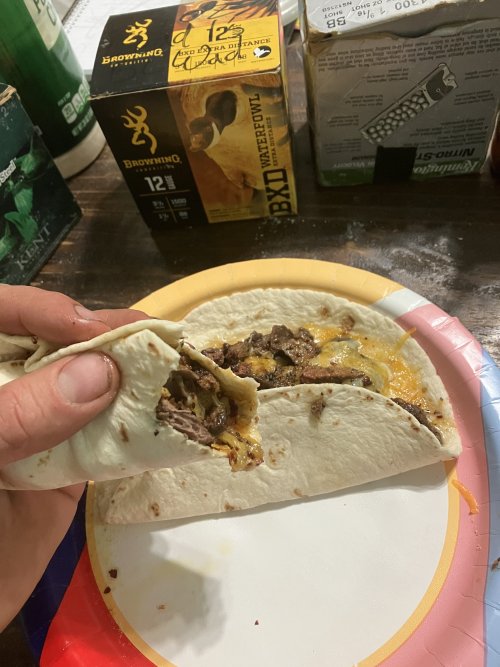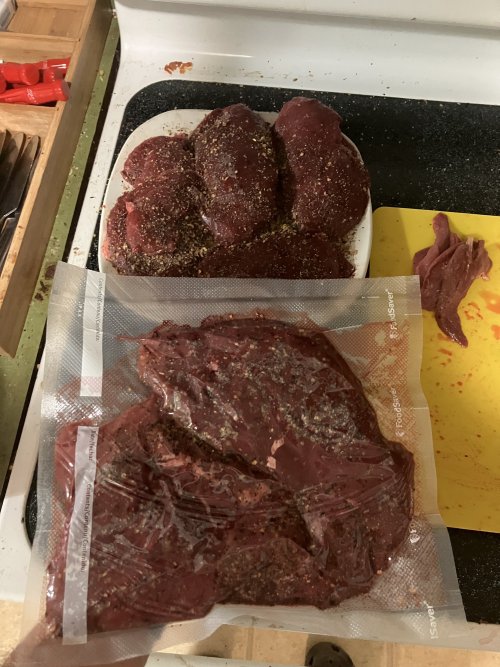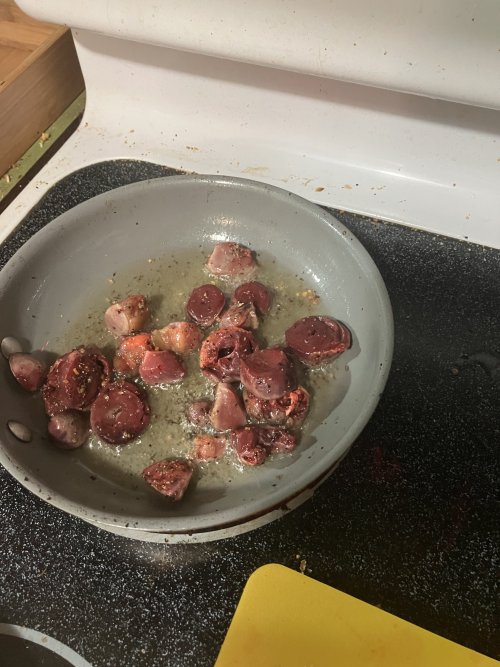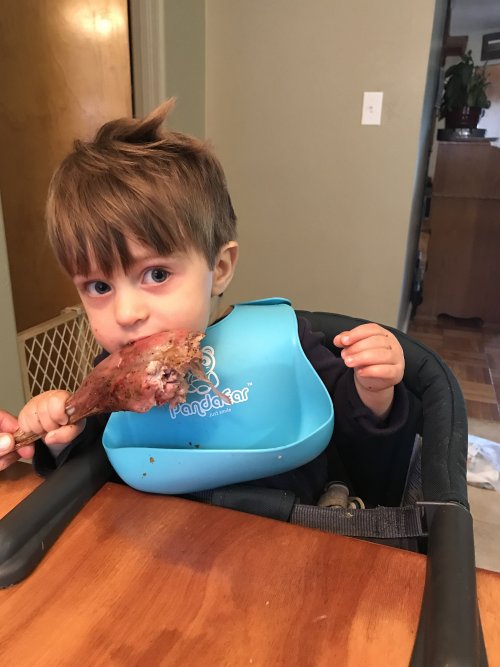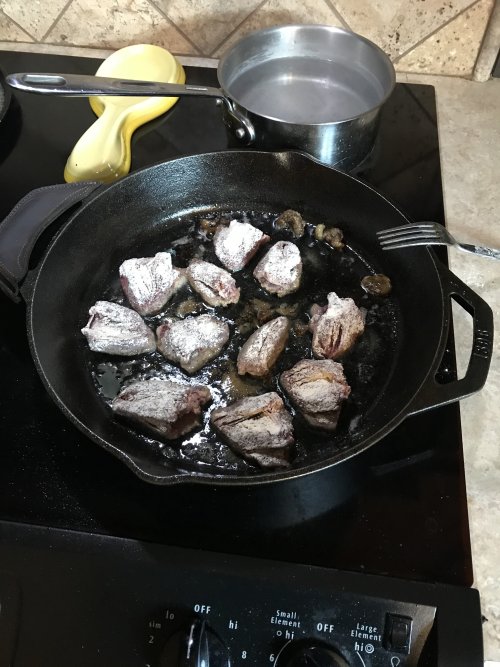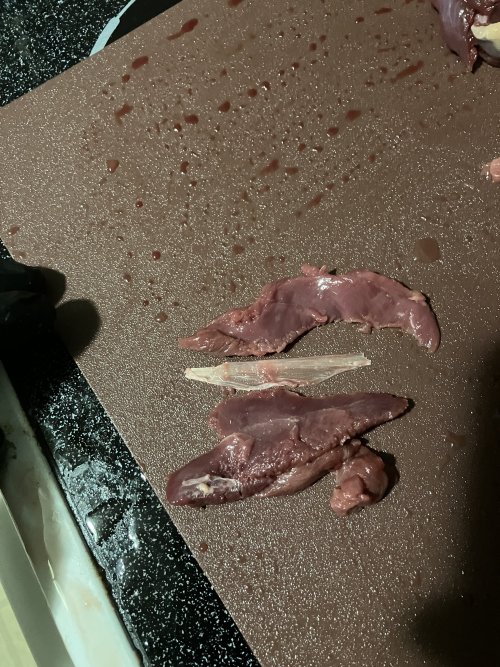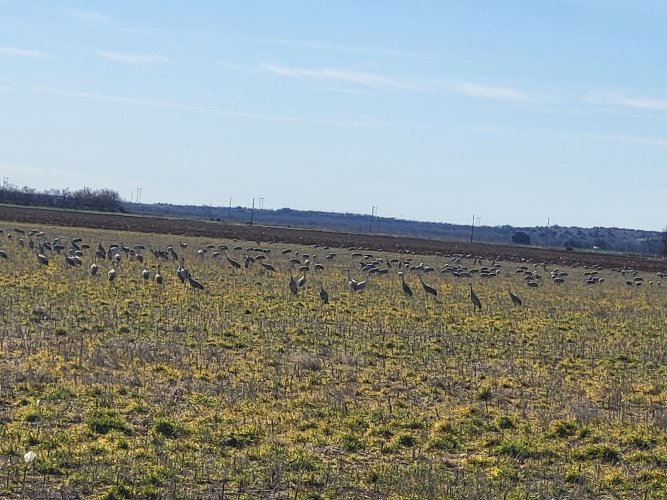ImBillT
Well-known member
- Joined
- Oct 29, 2018
- Messages
- 3,894
While I don’t care to increase the popularity of crane hunting, I also feel like most people who kill cranes don’t get to kill very many, and those could waste a larger portion of their lifetime’s harvest eating sub-par crane meat.
Breats- trim the silver skin on the outside, then flip over, and trim the exposed portion of the silver skin along with the ball of blood vessels. The silver skin is very thin. On a deer I would NEVER be concerned with silver skin as thin as what is on a crane breast, but crane is different. Their connective tissue is not like other animals. Trim it off the outside, and trim the exposed part of the inside. Next, cut the breast in half to make it thinner. You could probably butterfly it, but I find it simpler to go all the way through. The next step is optional, but I find it beneficial and convenient. PRE-SEASON. Seasoning now basically a dry brine. Crane is great, but you should probably dry brine all your red meat steaks. Thank me later. When I butcher deer or crane, I season, then vac-seal, then freeze. A lot of the time we will make a menu for the week and transfer all the necessary meat from the freezer to the fridge on Sunday. This slow thawing process is just more aging/dry bringing time. DO NOT FREEZE LESS THAN 48hrs AFTER KILLING YOUR CRANE! It needs to come out of rigor, and it needs a little bit of aging. Crane, and a lot of free range cervids, tend to have high percentages of omega-3’s. They can end up fishy with long aging periods line you will find with grain finished beef. A couple days before freezing and a thaw in the fridge is excellent. A week in the fridge before freezing can easily turn “fishy”. Don’t rush to process your crane or you’ll miss out on how tender and “beefy” crane really is. On the other hand, don’t over age it. It will turn on you. 1.5-3 days is perfect. 4-5 days might be pushing it, but dry brining seems to help, even though I don’t think that should help with oxidation of omega-3’s, it does seem to help a lot if you are busy.
GRILL THEM LIKE STEAK!!! THEY TASTE LIKE BEEF! Preferably rare to medium rare. If you like your steak cooked more than that, you need to experiment more! Crane breast is VERY tender, and has an excellent texture that is just as beef like as the flavor.
The main things to take away on crane breast would be to remove the silver skin on the outside even though it’s thin enough that you wouldn’t normally worry about it, to GRILL IT LIKE BEEF, and not to age it too long. I do think that cutting in half to thin it is better for me, but it might not be for you. Before I started thinning it, I felt like it went from tender to tough rather suddenly if I accidentally cooked it past medium rare. Since I started cutting it thinner I believe it tolerates cooking past medium rare much better, even if that’s not ideal.
Pictures below
Inside
Outside
Halving
Pre-seasoned stack
Sealed
Breats- trim the silver skin on the outside, then flip over, and trim the exposed portion of the silver skin along with the ball of blood vessels. The silver skin is very thin. On a deer I would NEVER be concerned with silver skin as thin as what is on a crane breast, but crane is different. Their connective tissue is not like other animals. Trim it off the outside, and trim the exposed part of the inside. Next, cut the breast in half to make it thinner. You could probably butterfly it, but I find it simpler to go all the way through. The next step is optional, but I find it beneficial and convenient. PRE-SEASON. Seasoning now basically a dry brine. Crane is great, but you should probably dry brine all your red meat steaks. Thank me later. When I butcher deer or crane, I season, then vac-seal, then freeze. A lot of the time we will make a menu for the week and transfer all the necessary meat from the freezer to the fridge on Sunday. This slow thawing process is just more aging/dry bringing time. DO NOT FREEZE LESS THAN 48hrs AFTER KILLING YOUR CRANE! It needs to come out of rigor, and it needs a little bit of aging. Crane, and a lot of free range cervids, tend to have high percentages of omega-3’s. They can end up fishy with long aging periods line you will find with grain finished beef. A couple days before freezing and a thaw in the fridge is excellent. A week in the fridge before freezing can easily turn “fishy”. Don’t rush to process your crane or you’ll miss out on how tender and “beefy” crane really is. On the other hand, don’t over age it. It will turn on you. 1.5-3 days is perfect. 4-5 days might be pushing it, but dry brining seems to help, even though I don’t think that should help with oxidation of omega-3’s, it does seem to help a lot if you are busy.
GRILL THEM LIKE STEAK!!! THEY TASTE LIKE BEEF! Preferably rare to medium rare. If you like your steak cooked more than that, you need to experiment more! Crane breast is VERY tender, and has an excellent texture that is just as beef like as the flavor.
The main things to take away on crane breast would be to remove the silver skin on the outside even though it’s thin enough that you wouldn’t normally worry about it, to GRILL IT LIKE BEEF, and not to age it too long. I do think that cutting in half to thin it is better for me, but it might not be for you. Before I started thinning it, I felt like it went from tender to tough rather suddenly if I accidentally cooked it past medium rare. Since I started cutting it thinner I believe it tolerates cooking past medium rare much better, even if that’s not ideal.
Pictures below
Inside
Outside
Halving
Pre-seasoned stack
Sealed
Attachments
-
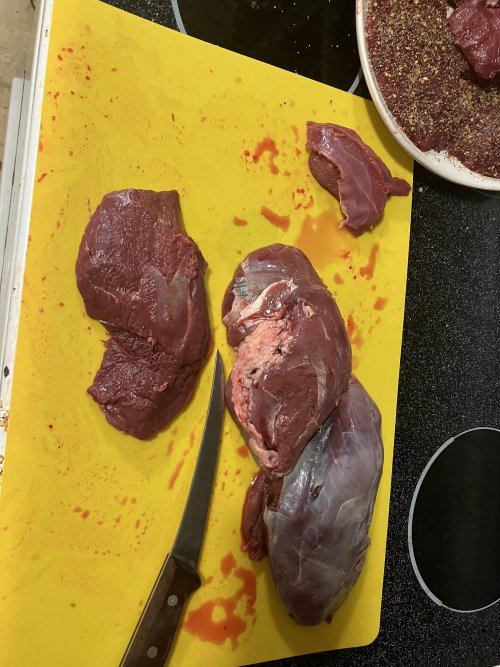 DE290F2C-46D4-403A-8251-84730B719FE6.jpeg2 MB · Views: 20
DE290F2C-46D4-403A-8251-84730B719FE6.jpeg2 MB · Views: 20 -
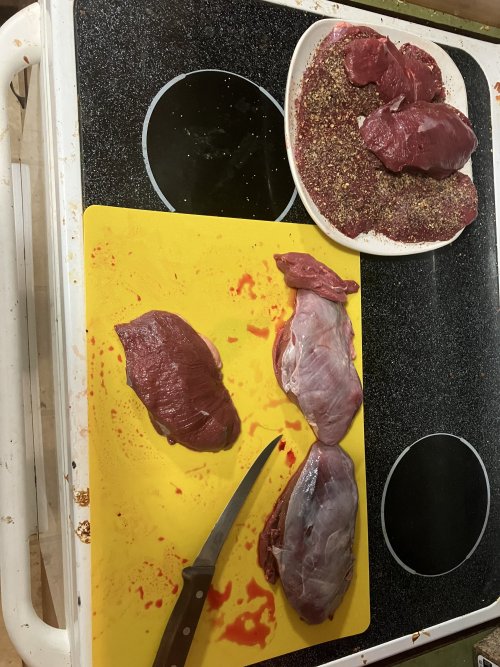 AFFC8E2D-ACD4-4E34-892F-46BA25EDB9DC.jpeg2.2 MB · Views: 20
AFFC8E2D-ACD4-4E34-892F-46BA25EDB9DC.jpeg2.2 MB · Views: 20 -
 273BD348-61FF-4742-BA47-FB66B7AD78AC.jpeg1.8 MB · Views: 19
273BD348-61FF-4742-BA47-FB66B7AD78AC.jpeg1.8 MB · Views: 19 -
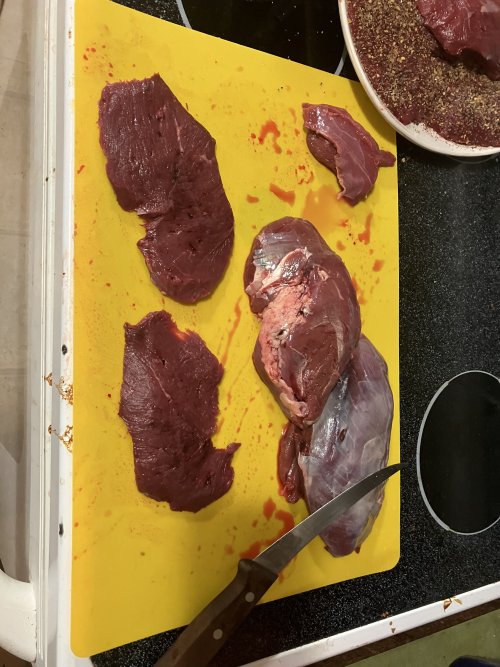 0F50E23F-E9F1-4FC7-A677-38591968145C.jpeg1.8 MB · Views: 19
0F50E23F-E9F1-4FC7-A677-38591968145C.jpeg1.8 MB · Views: 19 -
 B62D53CF-C120-4092-BBF7-8BB1DF81E826.jpeg1.9 MB · Views: 18
B62D53CF-C120-4092-BBF7-8BB1DF81E826.jpeg1.9 MB · Views: 18 -
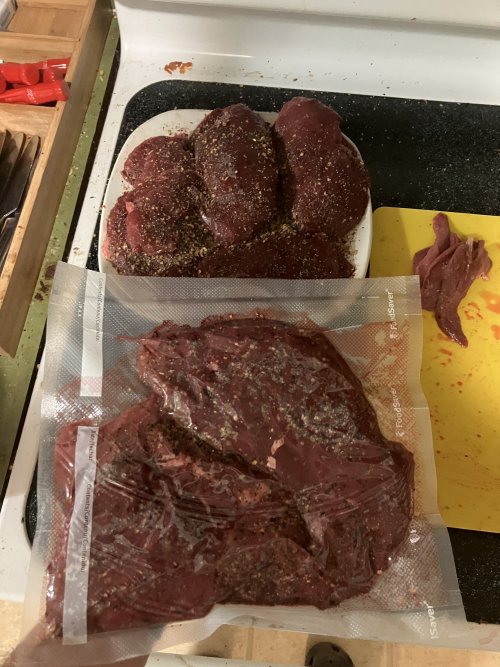 6BE8EB5A-A6A6-40AE-85E7-683D7DD0BB95.jpeg1.8 MB · Views: 20
6BE8EB5A-A6A6-40AE-85E7-683D7DD0BB95.jpeg1.8 MB · Views: 20
Last edited:




